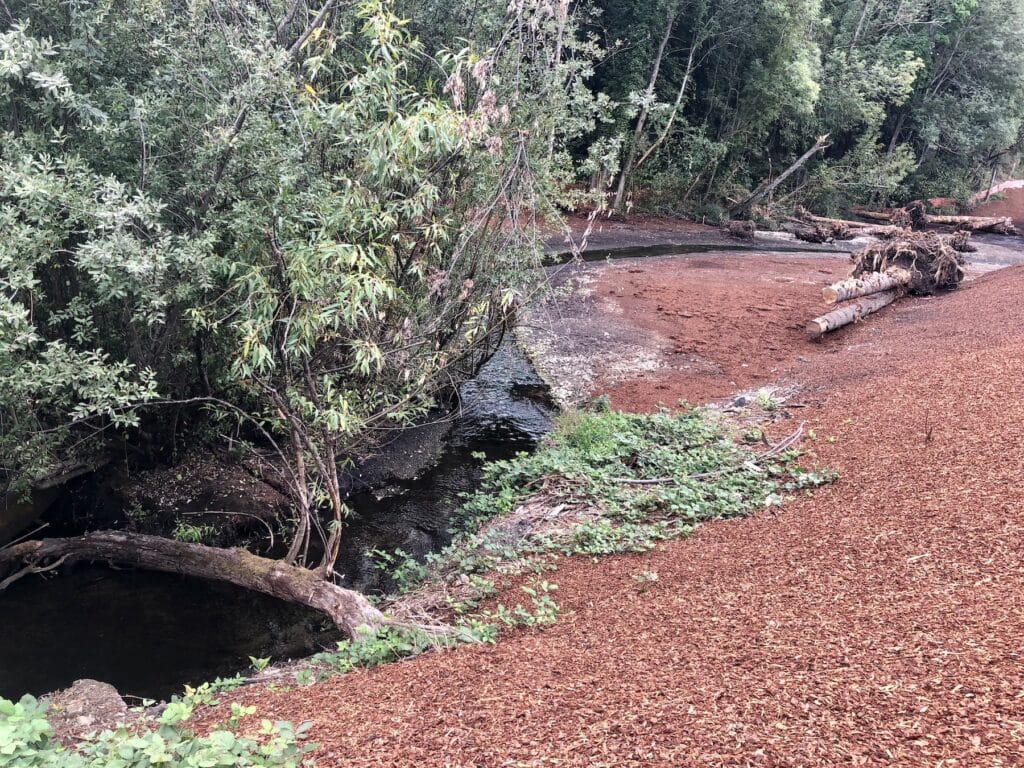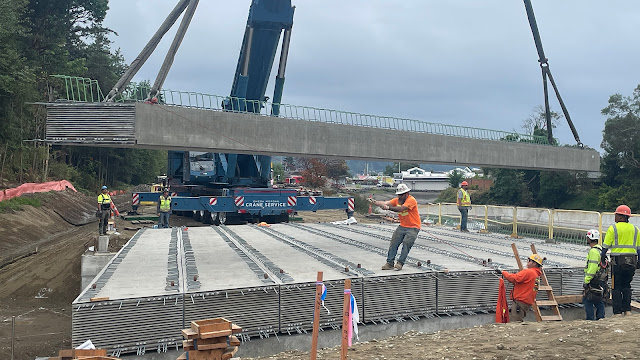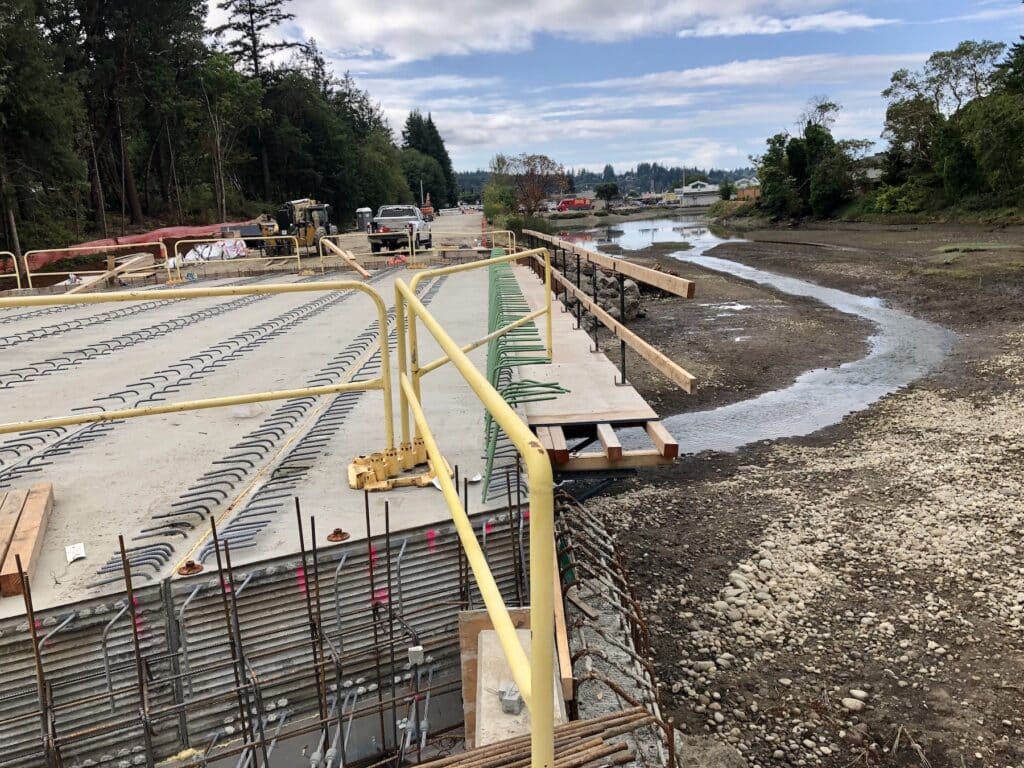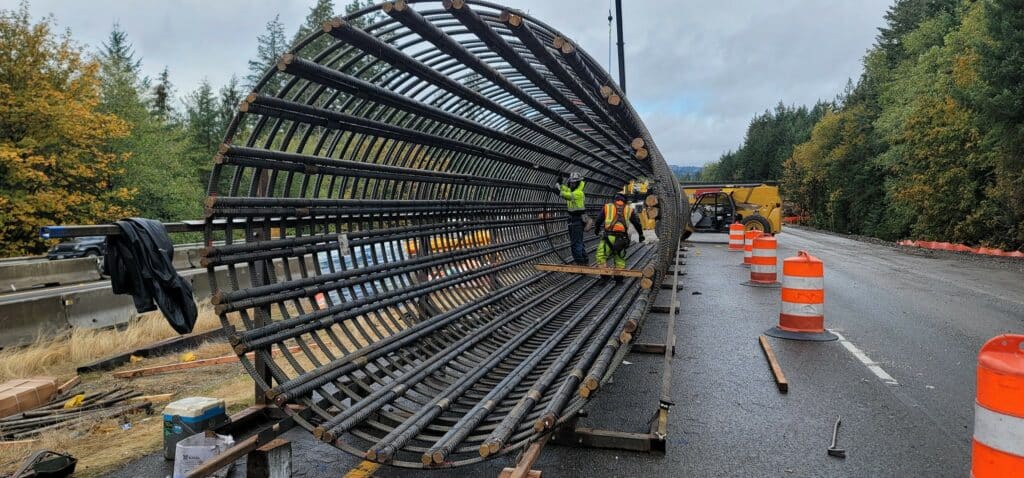Environment Transportation
Purdy project open to salmon, not yet to cars
Migrating salmon will enjoy easy entry into Purdy Creek this fall, though drivers must wait a few more months to cross above them.
Washington State Department of Transportation contractors closed off a partially blocking concrete box culvert and redirected the creek under a new Purdy Drive bridge. The stream is awaiting fish. The bridge top won’t be completed until the end of the year.
Eastbounders moving to median
At the other end of the $41.6 million project, farther up Purdy Creek, crews are building bridges to replace a pipe culvert beneath both directions of divided Highway 16. In October 2022, they moved the westbound lanes into the median to construct the new westbound bridge. It opened on Aug. 15.
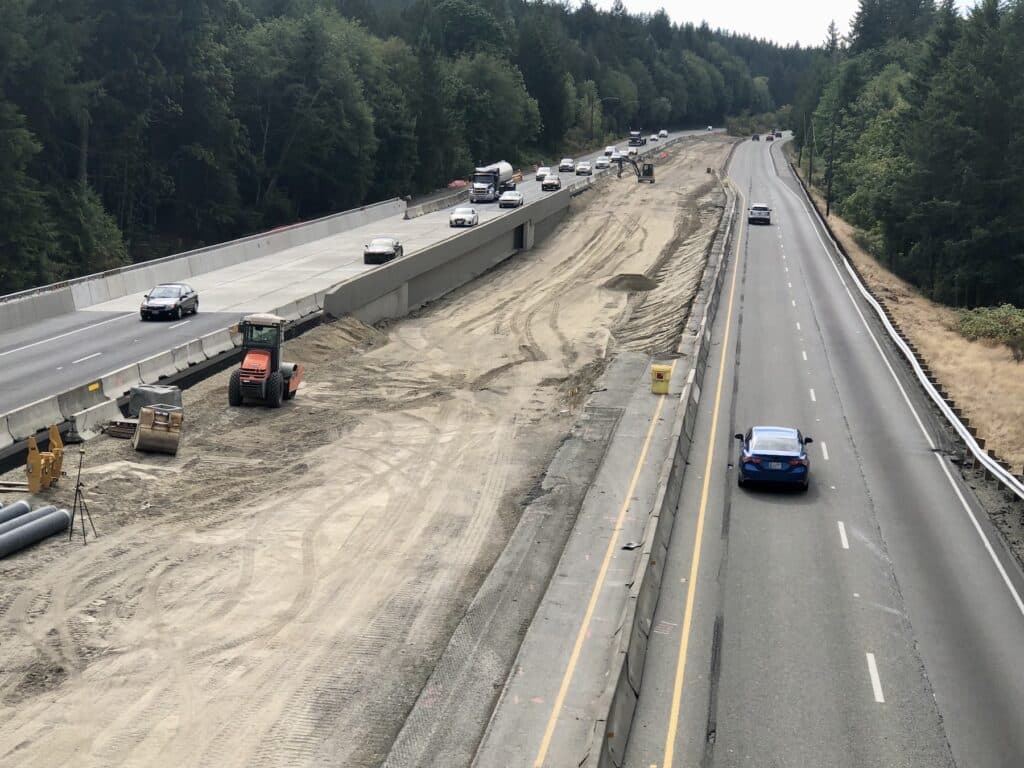
Crews are reconfiguring the Highway 16 median to carry eastbound traffic instead of westbound. The shift will occur overnight on Sept. 26-27. The new westbound bridge opened Aug. 15. The eastbound bridge will be completed in Fall 2024.
They’re now reconfiguring the median to shift the eastbound lanes there. From 7 p.m. Tuesday, Sept. 26, to 6 a.m. Wednesday, Sept. 27, travelers will encounter a rolling slowdown during the switch. Delays of up to 20 minutes could occur. The speed limit will be reduced from 60 to 45 mph for safety. Eleven crashes have occurred since work began there last fall.
Field trip
Gig Harbor Now recently toured the sites with WSDOT spokeswoman Angela Cochran and project engineer Justin Janke.
In Purdy, the creek now meanders between a barren moonscape of orange wood chips. It’s accented with anchored tree stumps and root wads that help stabilize the shoreline and provide habitat for salmon and other creatures.
Crews stripped away tall, invasive blackberry bushes, to soon be replaced by 4,500 native plants, Janke said. They’ll provide shade and food for fish in the large riparian zone that fills and empties with the tides.
More natural flow
The creek was dammed and pumped through pipes around the work area during a July 16-Aug. 31 in-water work window. It had hugged the base of the highway. It now takes a winding path that slows the flow to ease fish passage and prevent erosion.
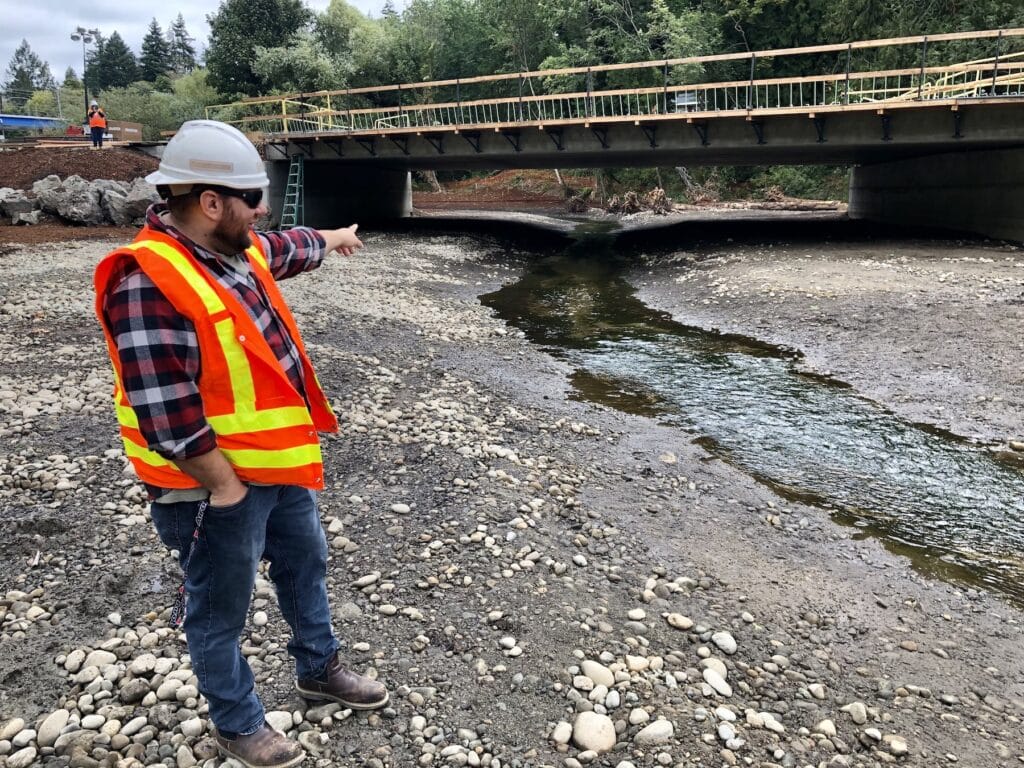
Project engineer Justin Janke, on the lagoon side of the bridge, describes how the stream bed was built to keep the creek on the surface instead of going underground. The area fills up with seawater during high tides.
“We looked at what this stream historically looked like and how to make it look like that again, and create a suitable habitat for the species,” Janke said.
Culvert partially blocked fish
Species in Purdy Creek include chinook, coho and chum salmon, coastal cutthroat, steelhead and resident trout, according to Washington State Fish and Wildlife. The department reported that the old culvert obstructed 33 percent of fish because of low stream depth and high flow rate. The agency grades culverts only as 0%, 33%, 67% or 100% passable.
The new stream bed lies on alternating layers of river rock and sand, which was washed into the rock to prevent water from infiltrating.
“It keeps the water on the surface so we have a creek instead of running underground and we have no creek anymore,” Janke said.
The stream now enters Burley Lagoon just north of the old box culvert that was installed in the 1960s. The 6-by-6 concrete tunnel was filled in and the ends capped with large rocks and woody material.
After the in-water work, crews spent two August days setting girders. They trucked in the 75-foot-long, precast concrete sections on flatbed trailers and craned them into place. The 10 abutting 4-foot-wide sections form the bridge’s backbone.
Once they were set, concrete was poured at the ends to lock them into place. Workers topped it all off with a 5-inch slab across the top to form the road deck, Janke chronicled.
Lots of concrete
Preparation for the girders began in April, with truckloads of dirt dug out and hauled away. Twenty-seven concrete shafts, 3 and 4 feet in diameter, were poured 11 to 35 feet deep on each side and topped with cap shafts on which the girders rest. Wingwalls contain dirt along the approaches.
After completing the bridge, WSDOT will repave Purdy Drive (also called the Highway 302 Spur) and the detour, Purdy Lane.
Long pipe carries creek under highway
Up at Highway 16, Fish & Wildlife documents state that only 33% of salmon can navigate the 5-foot pipe installed in 1978, when the Highway 16 Purdy bypass was built. The culvert replacement, which began in August 2022, is much like the Purdy construction but on a grander scale.
The six girders per bridge are 206 feet long. It takes three cranes to position them.
The culverts, buried 40 feet under the surface, will continue to carry the creek until the fish window next summer. Then a valley will be carved out beneath the bridges. A new, pseudo-natural stream bed will flow through 9,000 new native plants.
Land animals also benefit
“It’ll be a 200-foot-wide valley when we’re done,” Janke said. “A majority of the project will be the amount of dirt that comes out of here to create a new stream channel. It’ll be more like a wildlife crossing with a stream in the bottom of it instead of a stream in a 5-foot pipe that nothing gets through.”
Work will be completed in fall 2024.
The three new bridges will help salmon reach spawning grounds along Purdy Creek that flows 6.5 miles through rural residential property to about Burley-Olalla Road. But obstacles remain.
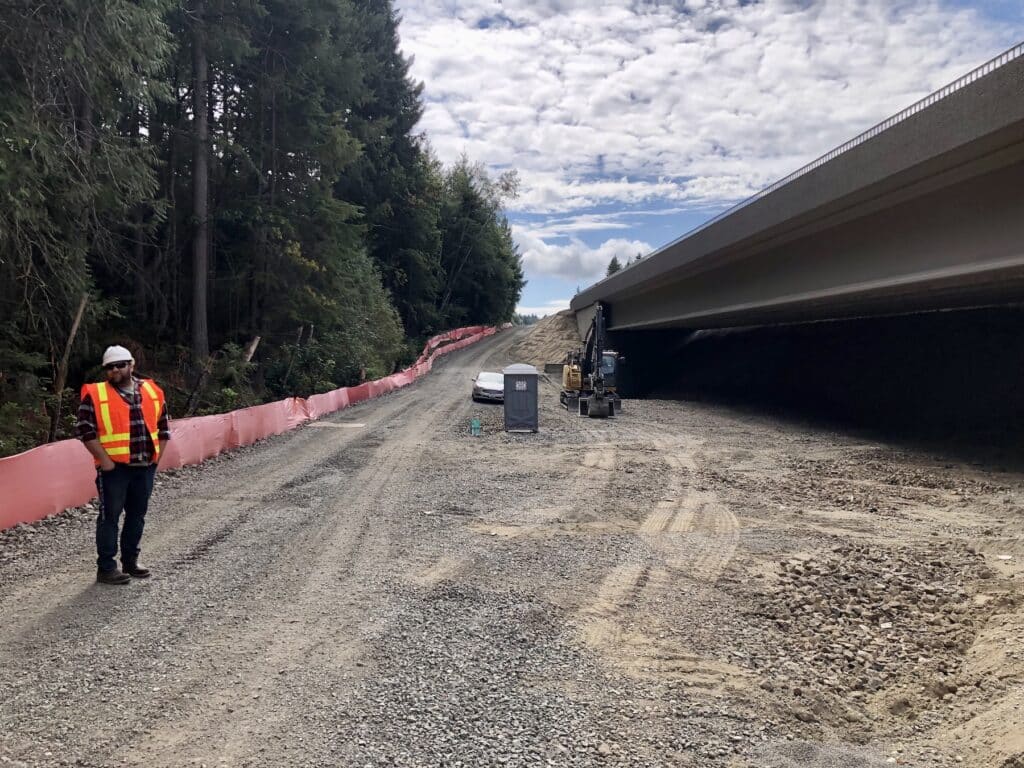
At Highway 16, the creek runs through a pipe 40 feet under the new bridge. A big, open valley will be dug out and planted for the new stream.
More projects to come
Just 110 yards upstream from the state’s Purdy project, fish confront a 320-foot-long system of county culverts that extend under a Chevron gas station and 144th Street. It blocks 67% of fish, according to Fish and Wildlife, because of fast and shallow water. And there’s another one on 160th Street, a dead-end road along the county line where a dropoff from the 4-foot concrete pipe’s outlet to the stream prevents 67% of fish from passing.
Studies have been conducted. Construction awaits funding. The creek is still partially clogged, but each improvement provides salmon better odds of procreating.
“I’m excited to see what comes through this migration season,” Janke said.
A 2013 federal court injunction requires the state to speed up its fish passage work in Western Washington. It must restore access to 90% of blocked habitat by 2030.

